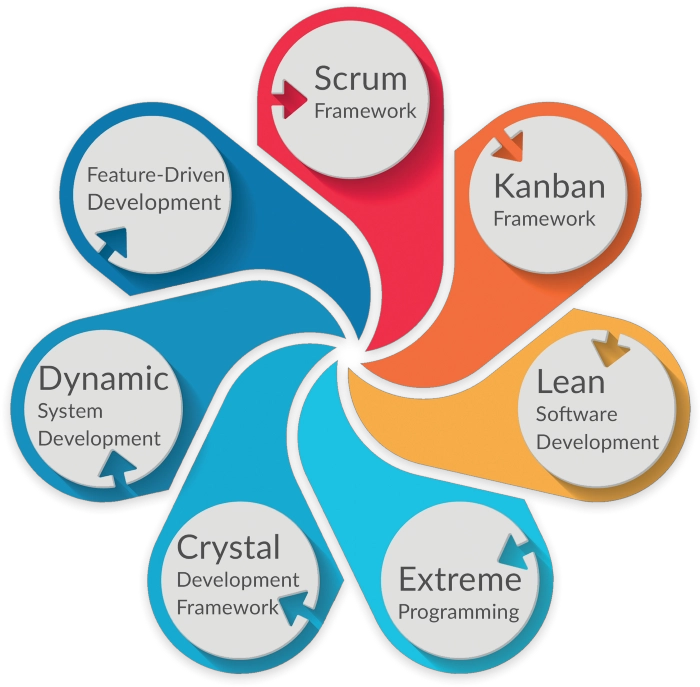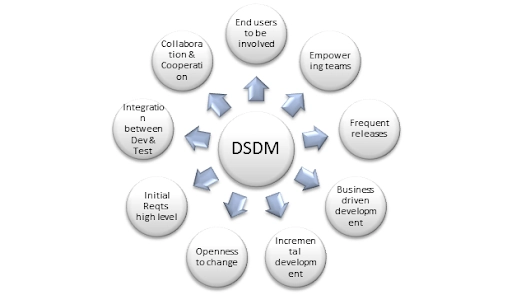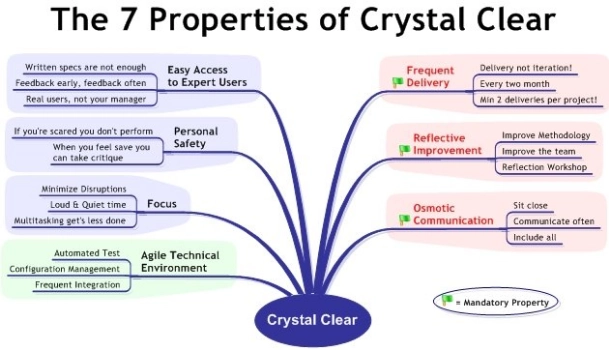Some of the practices on different types of Agile frameworks bring significant improvement after the failure of the traditional development model. Such as Scrum, Extreme Programming, Kan ban, Lean, Feature-Driven Development, Dynamic System Development, Crystal…

Scrum
Scrum focuses on breaking a project down into sprints, and only planning and managing one sprint at a time. It also has unique project roles, including scrum master, product owner, and development team. It is similar to Kanban in many ways.
A typical Scrum framework is as below:

Extreme Programming
XP planning addresses two key questions: predicting what will be accomplished by the due date, and determining what to do next.
There are two key planning steps in XP: release planning, and iteration planning.
XP 12 core practices are as below:

Kan ban
Kanban uses incremental improvements to continuously add parts or features until such time that the product is fit to be delivered. It allows the development team to visualize their entire workflow. The development process is generally broken down into multiple problems and is managed using a task board.
The Kanan 6 core practies are as below:

Lean
Lean is a way of working which focuses on the removal of waste from a process.
The Lean 7 core principles are as below:

Feature-Driven Development
Feature-Driven Development (FDD) involved creating software models every two weeks and requires a development and design plan for every software model feature.
It’s main purpose is to deliver tangible, working software repeatedly in a timely manner. The advantage of using FDD is that it is scalable even to large teams due to the concept of ‘just enough design initially’ (JEDI).
The FDD 5 basic activies are as below:

Dynamic System Development
DSDM is an Agile method that focuses on the full project lifecycle. It is an iterative approach to software development. The framework is built on four principles: feasibility and business study, functional model and prototype iteration, design and build iteration, and implementation.
The DSDM 9 principles are as below:

Crystal
Crystal methodology is one of the most lightweight and flexible approaches to develop software. It is color-coded including Clear, Crystal Yellow, Crystal Orange.
The Crystal Clear 7 properties are as below:
